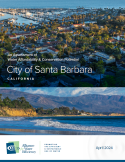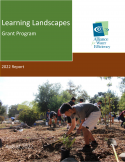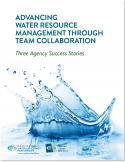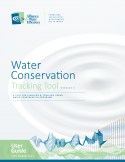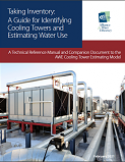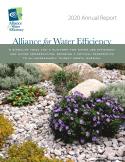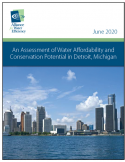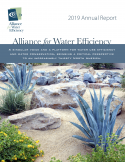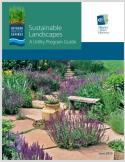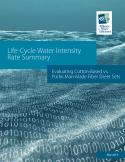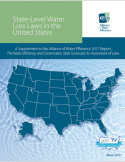More than ever, Americans need more homes that are affordable to buy initially and own in the long run. At the same time, water resources are being stretched thin, and water utility bills are increasing faster than inflation. Efficiency can help address both affordability and water resource challenges. The federal government already provides tax credits for ENERGY STAR Homes under the tax code (26 USC § 45L) to transform the new home market to greater energy efficiency levels and ensure affordable energy bills for future homeowners.
Our Work
The Alliance for Water Efficiency (AWE) partners with our members and other organizations to produce the research, tools, resources, and information they need to advance water efficiency in their communities. Our work has helped water professionals seize new opportunities, uncover challenges, and break down barriers to achieve sustainable water use. To get involved and help define the work we do, join the AWE network today.
2024
Report Demonstrates that Efficiency Saves Water and Money for Cal Water and Its Customers
This report focuses on two questions on how water efficiency and conservation have affected Cal Water and its customers:
(1) What would the impact on bills have been if no water efficiency or conservation had occurred?
(2) Are bill-paying customers better or worse off?
Affordability is a growing concern as water and wastewater rates rise to account for the increasing costs due to aging infrastructure, extreme weather events, climate change, regulations, and inflation, to name a few. Investing in water conservation and efficiency is one strategy to keep water and wastewater bills affordable. As part of AWE’s mission to promote the efficient and sustainable use of water, AWE is conducting research to better understand how water conservation and efficiency can help lower water bills for low-income customers.
2023
What resulted was the First Annual Water Efficiency and Conservation Symposium in August 2023. It was an incredible three days of professional development, relationship building, and hands-on learning opportunities for the 150+ attendees from across North America, representing water and wastewater utilities, government agencies, and business and industry partners.
In 2022 AWE collaborated with Regional Water Authority (RWA) to prepare a report titled "Water and Energy Savings Estimates for CII Landscapes Upgrade Projects". RWA is a joint powers authority representing water providers and affiliates in the Sacramento region of California.
AWE’s report, An Assessment of Water Affordability and Conservation Potential in Houston, Texas, evaluates water affordability in Houston and the extent to which water efficiency and conservation can help families, particularly disadvantaged families, lower their water and sewer bills. This follows on AWE’s recent water affordability assessments, including the 2022 analysis of affordability in Long Beach, Ca
AWE’s report, Smart Practices to Save Water: An Evaluation of AMI-enabled Proactive Leak Notification Programs, presents an analysis from four participating utilities with AMI-enabled leak notification programs - Forth Worth, TX, Sacramento, CA, Sacramento Suburban Water District, and San Francisco Public Utilities Commission.
2022
Among AWE’s many accomplishments in 2022, which include taking an active leadership role in responding to the historic Western drought, the compilation of the third edition of the State Policy Scorecard for Water Efficiency and Conservation and the completion of a multi-year cooling tower research project, one that stands out is actually about 2023 and beyond: a new, three-year Strategic Plan (2023 – 2025). The plan was ready for a refresh, with the last update occurring in 2018.
AWE and The Scotts Miracle-Gro Foundation are excited to share a report detailing projects funded by the 2021 Learning Landscape Grants, as well as two projects from the 2020 program that were recently completed. The AWE Learning Landscape Grant Program, funded by the Scotts Miracle-Gro Foundation, helps support building or improving educational outdoor spaces at schools, botanical gardens, and community locations that allow school-age children to experience hands-on learning about water efficiency in outdoor landscapes.
Collaboration between the conservation and operation departments in water utilities is key to improving water conservation, mitigating water loss, and developing programs that will benefit the whole service area of a water utility. A strong relationship between the two departments can greatly bolster the success and lead to better management of the utility’s water and energy resources.
2021
2021 was another challenging year for the Alliance for Water Efficiency (AWE) and our partners as drought – both prolonged and seasonal - continued across much of North America, with the prospect of increasing water supply instability because of climate change. At the same time, political divisions strained the ties that bind our nation together and threatened to prevent action on a host of pressing challenges, including the growing water crisis.
Learn more about AWE's eventful 2021 in the full report.
Need help in planning your water conservation programs? The Alliance for Water Efficiency (AWE) has a solution for you. First released in 2009 after a successful beta testing period with a number of water utilities, the Tracking Tool is now in Version 4.0 (2021) and has over 400 users. The Tracking Tool is an Excel-based model that can evaluate the water savings, costs, and benefits of conservation programs for a specific water utility, using either English or Metric units.
The Alliance for Water Efficiency’s Cooling Technologies Study was initiated by the AWE Water Efficiency Research Committee after it identified cooling tower water efficiency as an area of needed research. The project began in early 2020 and was completed in the Fall of 2022. AWE worked with the Pacific Northwest National Lab and Maureen Erbeznik & Associates to develop tools and resources to help AWE members create, or optimize, cooling tower water efficiency programs.
2020
Despite the challenging circumstances of 2020, the Alliance for Water Efficiency (AWE) persevered to provide research, member support, and policy advocacy that advanced sustainable water use across North America. As the world abruptly shifted to remote working, we collaborated with our partners to exchange ideas and strategies for navigating the new reality.
Learn more about AWE's eventful 2020 in the full report.
AWE’s report, An Assessment of Water Affordability and Conservation Potential in Detroit, Michigan, evaluates water affordability and water conservation potential at the census tract level. Water affordability is an incredibly important issue, and the Alliance for Water Efficiency is dedicated to advancing the conversation by applying and evaluating measures of affordability and quantifying the benefits of water conservation. Through our efforts we aim to better understand and define the problem, and work toward solutions to help communities that are disproportionat
The Alliance for Water Efficiency (AWE) Outdoor Water Savings Research Initiative kicked off in 2015 and includes a research review on outdoor water programs, the Peak Day Water Demand Management Study, the Landscape Transformation
2019
2019 was a year of production. AWE released studies, reports, manuals, handbooks, user guides, and webinars.
We successfully mobilized our community to help ensure a place for EPA’s WaterSense program in the FY2020 national budget.
We collaborated with Plumbing Manufacturers International (PMI) to establish strict guidelines for installing multiple showerheads in a single stall, thus closing a significant loophole in codes and ensuring effective water efficiency standards.
The Alliance for Water Efficiency's (AWE) Landscape Transformation Study found that consumers are ready for sustainable, water-efficient landscapes—but they need help from their water providers.
There is great interest in evaluating products and processes for their contribution to a more sustainable future and particularly as they might contribute to overall water efficiency.
This report focuses exclusively on the water loss portion of the 2017 Water Efficiency and Conservation State Scorecard: An Assessment of Laws. All 50 states were ranked based on state laws promoting water loss control. These ranks are displayed in a map, indicating which states have strong water loss control laws and where there is opportunity for improvement.







